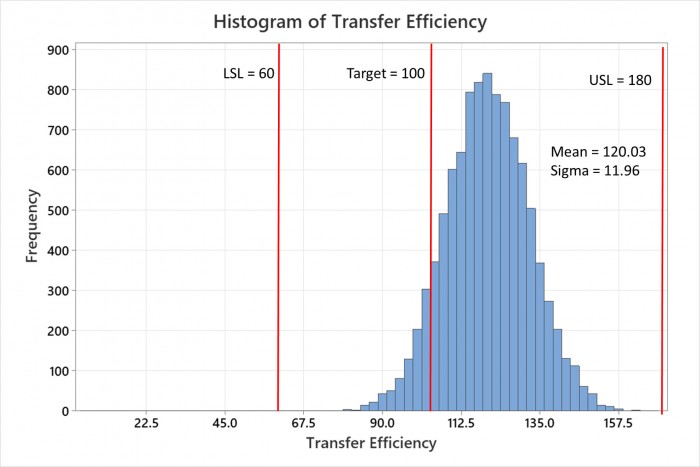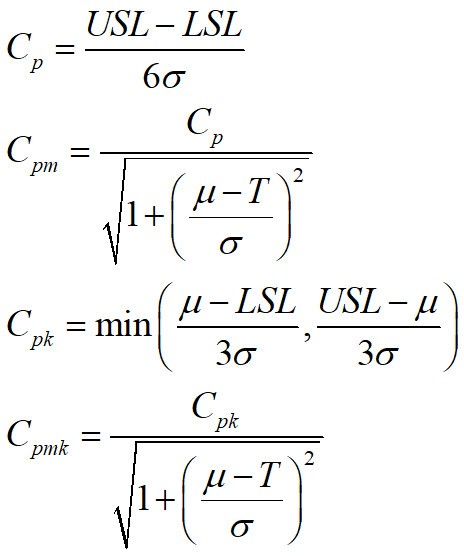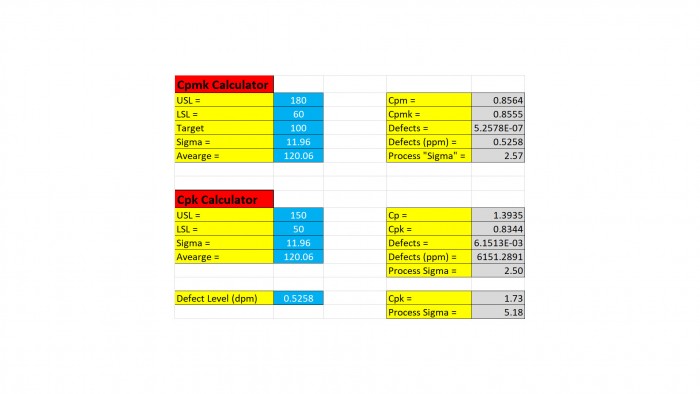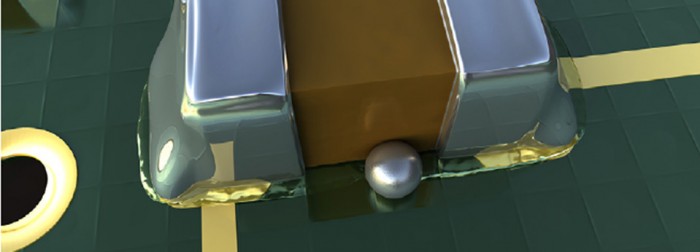Folks,
Cp and Cpk assume symmetrical specification limits with respect to the target. However, sometimes specification limits are not symmetrical. As an example, IPC 610 suggests that for stencil printing transfer efficiency (TE) the upper specification limit (USL) should be 180%, and the lower specification limit (LSL) should be 60% with a target of 100%. These specs are a bit different than and USL of 150% and a LSL of 50% that have used in the past. My good friend Daryl Santos discussed this topic at the recent SMTA PanPac 2024 in his paper, An Improved Automated SPI Data Analysis Report Generator for Printed Circuit Board Assembly.
As an example, suppose we have the TE data as shown in Figure 1.

Figure 1. Stencil Printng Transfer Efficiency Data
Clearly, the specs are not centered on the target of 100%. In cases like this, Daryl pointed out that we should not use Cp and Cpk, but Cpm and Cpkm. These indices are often referred to as the "Taguchi Process" indices and are shown and compared to Cp and Cpk in Figure 2.

Figure 2. A comparison of Cp, Cpk, Cpm, and Cpmk
Let’s analyze the data in Figure 1 for Cp, Cpk, Cpm and Cpmk. I improved my Cp, Cpk Excel® software tool to calculate these metrics.
The results are in Figure 3. Note that Cpk and Cpmk are quite close at 0.8344 and 0.8555.However, the level of defects (readings beyond the spec limits) are strikingly different. In the Cpm calculations, the defect rate is only 0.5258 dpm (defects per million), whereas for the Cp calculations the rate is more than 10,000 times higher at 6151.3 dpm. This stunning difference is due to the USL for the Cpm calculations being 180% versus 150% for the Cp calculations.
Figure 3. Cp, Cpk, Cpm, and Cpkm Calculations for the data in Figure 1.
In Cp and Cpk calculations, the process sigma is three times the Cpk.This relationship has little meaning in Cpm calculations. In Figure 3, we get an estimate of an equivalent process sigma of 5.18 (see lower right of Figure 3) by using the projected defect rate.
Since IPC 610 recommends the USL TE of 180%, LSL of 60% with a target of 100%, I expect Cpm and Cpmk to become common terms in electronic assembly.
Cheers,
Dr. Ron


